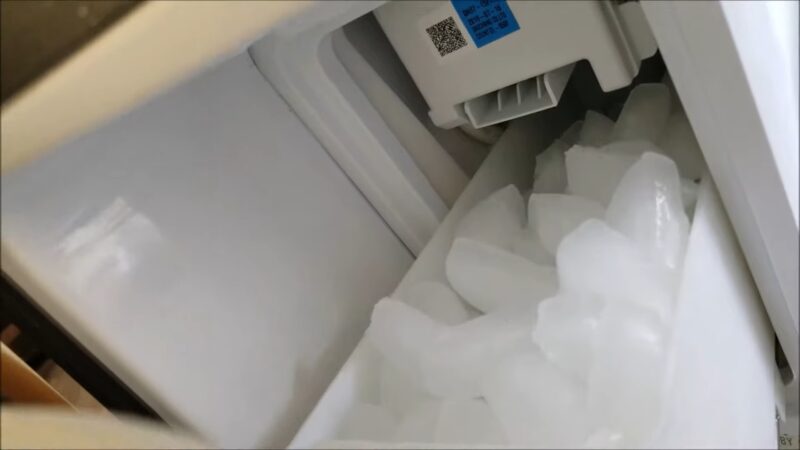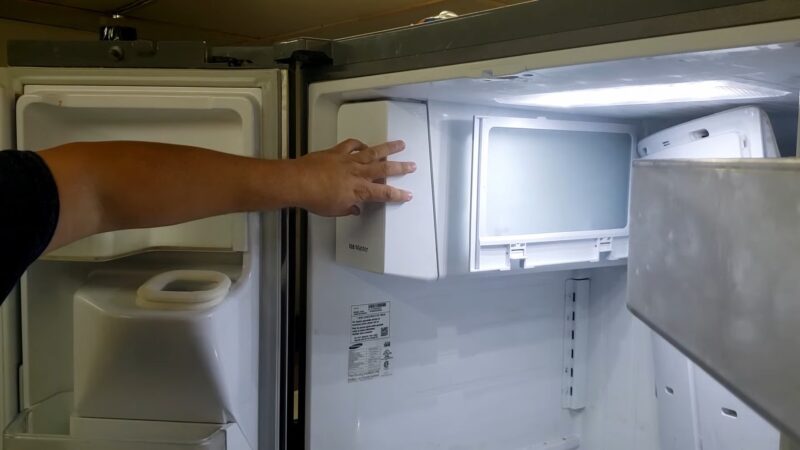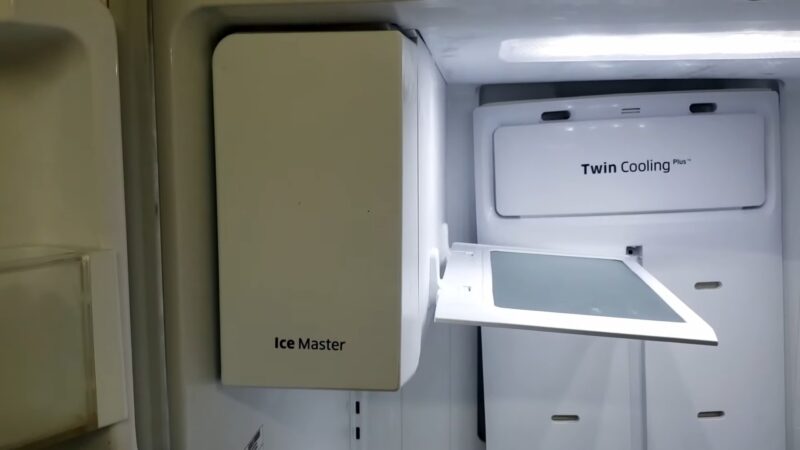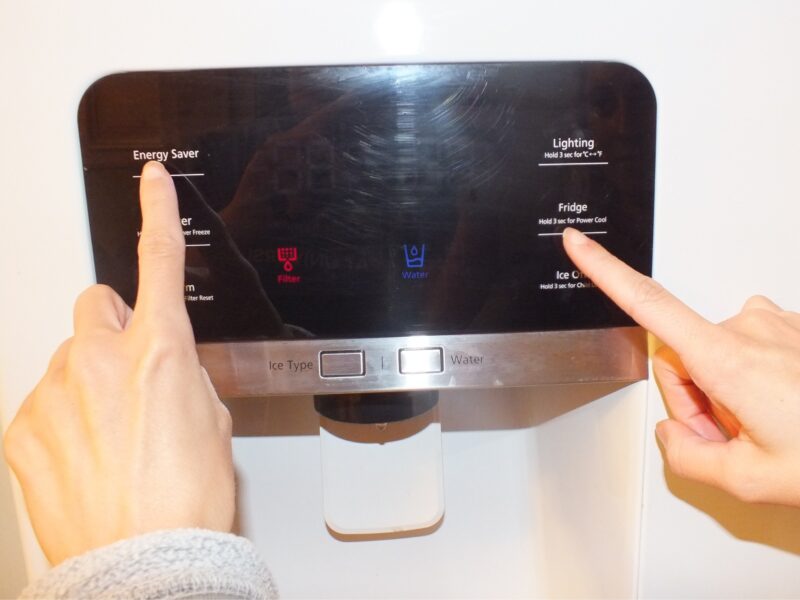If you own a Samsung refrigerator with a built-in ice maker, you’ve likely marveled at the convenience of having fresh ice available at your fingertips. But even the best appliances can encounter issues, and this one is no exception. One common issue that affects many Samsung ice makers is the buildup of frost or ice, which can impede its performance and ultimately lead to a lack of ice production.
Fortunately, defrosting is a simple process that you can do yourself. In this comprehensive guide, we’ll explain how to defrost your ice maker quickly and safely, ensuring that it continues to operate optimally. Follow our step-by-step instructions, and you’ll be back to enjoying refreshing, cold beverages in no time!
A Brief Overview of Ice Maker
Before we dive into the defrosting process, it’s crucial to understand why frost buildup occurs in these appliances. Frost or ice buildup is typically caused by one of the following factors:
- Fluctuating temperatures: If the temperature inside your refrigerator or freezer is constantly changing, it can lead to excess moisture, which may result in frost buildup.
- Frequent door opening: Opening the refrigerator door frequently can also cause moisture to accumulate inside the appliance.
- Damaged or misaligned door seal: If the door seal isn’t functioning properly, warm air can enter the refrigerator, leading to condensation and frost.
- Malfunctioning components: In some cases, frost buildup may be due to a faulty component within the ice maker itself.
Understanding the cause of the frost buildup will help you address the issue more effectively and prevent it from recurring in the future.
Identifying the Right Time to Defrost

Defrosting shouldn’t be a routine task; instead, it’s best to defrost this appliance only when necessary. Here are some signs that it’s time to do the deforsting:
- The ice maker is producing less ice than usual or no ice at all.
- The ice produced is smaller or misshapen.
- You notice frost or ice buildup around the ice maker or in the ice storage bin.
- The device is making unusual noises, such as humming or grinding.
If you observe any of these signs, it’s time to engage in defrosting.
The Manual Defrosting Method
The manual defrosting method is a simple and effective way to remove frost buildup. Follow these steps:
- Turn off the ice maker: Locate the power switch and turn it off. In most Samsung refrigerators, the switch is located on the ice maker itself or inside the freezer compartment.
- Empty the ice storage bin: Remove any remaining ice from the ice storage bin and set it aside.
- Unplug the refrigerator: To ensure your safety, unplug the refrigerator from the power source.
- Open the freezer door: This will allow the warm air to circulate inside, helping to melt the frost buildup.
- Place towels or absorbent materials: Position towels or absorbent materials beneath the device to catch any water that may drip during the defrosting process.
- Use a hairdryer or fan: To speed up the defrosting process, you can use a hairdryer on a low setting or a fan to direct warm air toward the ice maker. Be sure to keep the hairdryer at a safe distance from it to avoid damaging the appliance or causing an electrical hazard. Never use sharp objects to chip away at the frost, as this can cause physical damage.
- Monitor the defrosting process: Keep an eye on the progress and ensure that the water is being absorbed by the towels. Replace the towels as needed to prevent water from pooling in the freezer.
- Clean the ice maker: Once the frost has melted, use a soft cloth or sponge to clean the device and the surrounding area. Be sure to remove any remaining ice or water to prevent future frost buildup.
- Plug in the refrigerator: Once you’ve finished cleaning, plug the refrigerator back into the power source.
- Turn on the ice maker: Switch it back on and wait for it to begin producing ice. This may take a few hours as the device needs to reach the optimal temperature for ice production.
The Forced Defrost Mode Method

Some Samsung refrigerators come equipped with a forced defrost mode that can be used to defrost the ice maker quickly. To use this method, follow these steps:
- Locate the refrigerator’s control panel: The control panel is usually located on the front of the refrigerator or inside the refrigerator compartment.
- Enter forced defrost mode: Press and hold the appropriate buttons to enter the forced defrost mode. The specific button combination varies depending on your refrigerator model, so consult your user manual for instructions.
- Select the ice maker defrost option: Once in forced defrost mode, use the control panel to select the defrost option. The refrigerator will then begin the defrosting process.
- Wait for the defrost cycle to complete: The forced defrost mode will automatically end after a set period, usually around 20-30 minutes. Do not open the freezer door during this time.
- Turn off forced defrost mode: Once the defrost cycle is complete, turn off the forced defrost mode by pressing the appropriate buttons on the control panel.
- Check the ice maker: After the forced defrost cycle, inspect the ice maker for any remaining frost or ice. If necessary, repeat the forced defrost mode or use the manual defrosting method to remove any remaining buildup.
Preventative Measures to Minimize Frost Buildup
To keep your Samsung ice maker functioning optimally and prevent the need for frequent defrosting, follow these tips:
- Maintain consistent temperatures: Keep your refrigerator and freezer temperatures stable by avoiding frequent door openings and ensuring the doors are properly sealed.
- Check door seals: Inspect the door seals regularly for damage or misalignment and replace them if necessary.
- Limit moisture: Store food in airtight containers and promptly wipe up any spills or condensation inside the refrigerator.
- Clean the appliance regularly: Regularly clean the ice maker and surrounding area to prevent frost buildup.
Common Troubleshooting Tips

If you’ve defrosted your Samsung ice maker but are still experiencing issues, consider the following troubleshooting tips:
- Check the water supply: Ensure that the water supply is functioning properly and that there are no kinks or blockages in the water line.
- Inspect the ice maker components: Check it for any damaged or malfunctioning components, such as the ice mold or the motor. Consult your user manual or contact a professional for assistance with repairs or replacements.
- Reset the ice maker: In some cases, resetting the ice maker can resolve minor issues. Refer to your user manual for instructions on how to reset your specific ice maker model.
After resolving the ice buildup issue in your Samsung refrigerator, you might want to explore our easy steps to set up Wi-Fi on your appliance, unlocking additional features and convenience in your kitchen.
Final Words
Defrosting your Samsung ice maker is a straightforward process that can significantly improve its performance and ensure that you always have a steady supply of ice on hand. By following our step-by-step guide and implementing the preventative measures we’ve outlined, you can keep your ice maker functioning optimally and avoid the need for frequent defrosting.
Remember, if you encounter persistent issues with your ice maker even after defrosting and troubleshooting, it’s best to consult a professional technician or contact Samsung customer support for assistance. With proper care and maintenance, your Samsung ice maker will continue to be a convenient and reliable addition to your kitchen for years to come.
Now that you’re equipped with the knowledge and tools to defrost your Samsung ice maker, you can confidently tackle frost buildup and enjoy the convenience of readily available ice for your beverages and culinary creations.







